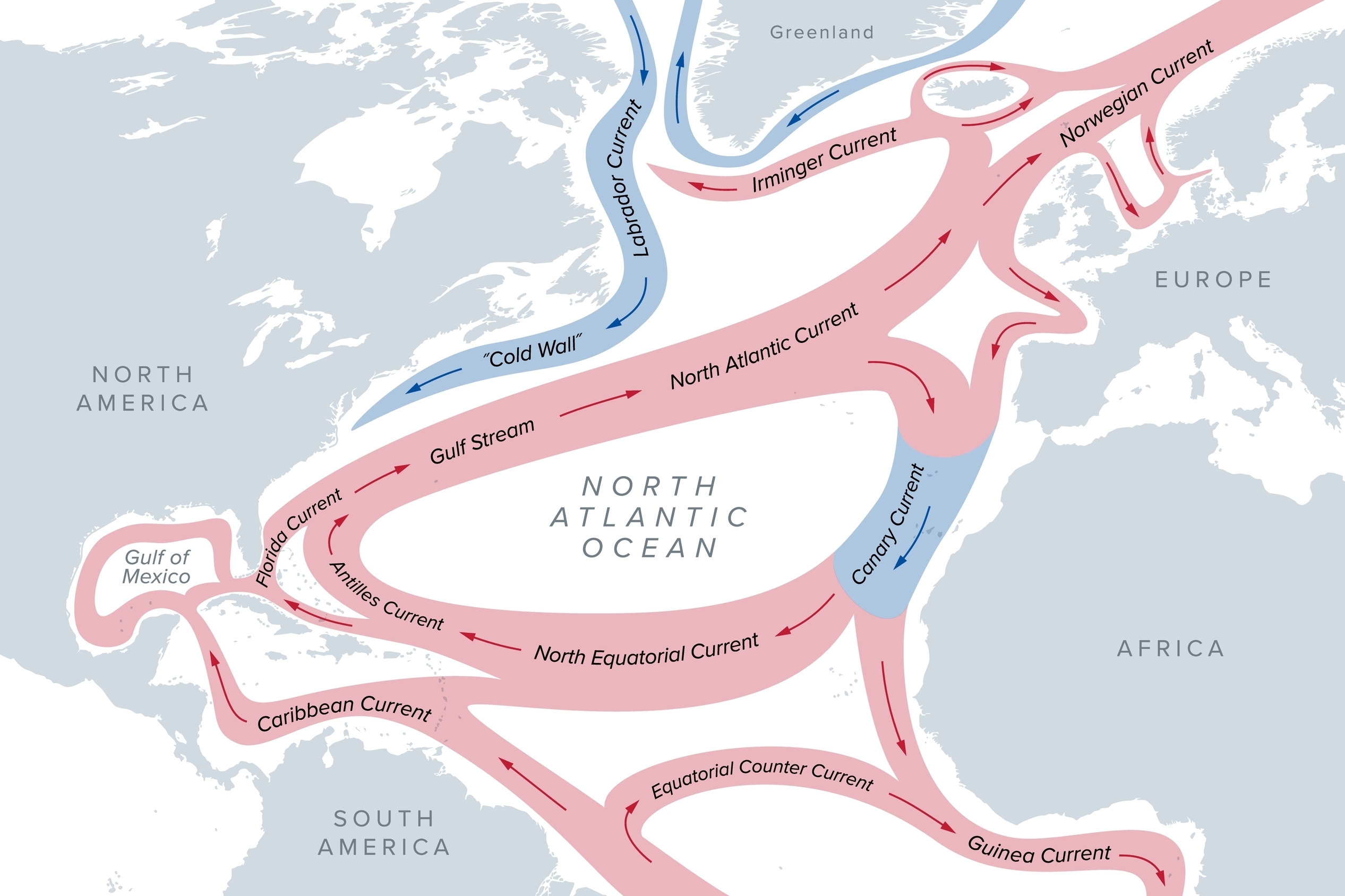The risk of flooding events along the U.S. Northeast coast has doubled since 2005. Now, scientists have discovered that up to 50% of these events occurred because key Atlantic ocean currents are slowing down.
In a new study, researchers found that a considerable portion of the increase in flood risk was linked to the deceleration of the Atlantic Meridional Overturning Circulation (AMOC) — a giant network of ocean currents in the Atlantic Ocean that includes the Gulf Stream and brings heat to the Northern Hemisphere.
The AMOC relies on surface waters that have traveled north from the Southern Hemisphere sinking in the North Atlantic. Once they reach the seabed, these waters can ride back south on bottom currents. But climate change is blocking the sinking step by releasing meltwater from the Arctic and Greenland Ice Sheet into the North Atlantic. This dilutes the salt concentration and reduces the density of surface waters, keeping them at the top of the water column.
“Our results clearly show that AMOC weakening has contributed to above-average sea level rise and more frequent flooding along the U.S. Northeast coast over recent years,” study lead author Liping Zhang, a project scientist at the National Oceanic and Atmospheric Administration (NOAA)’s Geophysical Fluid Dynamics Laboratory, told Live Science.
The East Coast as a whole is extremely vulnerable to sea level rise and flooding from climate change, but the Northeast coast is a hotspot when it comes to these impacts, Zhang said. That’s mainly because weak circulation in the Atlantic Ocean redistributes heat to regions like the Northeast coast, which causes the water there to swell, she said.
Related: ‘We don’t really consider it low probability anymore’: Collapse of key Atlantic current could have catastrophic impacts, says oceanographer Stefan Rahmstorf
“Global warming actually has two effects [on sea levels],” she said. “One is the melting of ice caps, which is adding water mass from the land to the ocean, and the other is through thermal expansion, which is when water gets warm and starts expanding.”
Areas of the ocean that receive the most heat, and therefore undergo more thermal expansion, are likely to experience more rapid sea level rise. “From dynamics, we can see that the AMOC has the strongest [sea level rise] effect on the U.S. Northeast coast,” Zhang said, “so that’s why we focused on this region.”
The aim of the new study was to explore the impact of a “moderate” AMOC decline on sea levels and flooding frequency along the Northeast coast. A moderate decline is consistent with climate modeling and direct observations over the past 20 years, Zhang said, so the research is a realistic picture of the AMOC’s contribution to the recent increase in sea levels and flooding.
The researchers first used a global climate model to simulate large-scale atmospheric and ocean dynamics. They then fed this model sea level data for the Northeast coast from 1912 through 2022, “to force the model to be consistent with observations,” Zhang said. Next, the scientists increased the resolution of the ocean component in the model, enabling them to focus on coastal regions. The last step was a statistical analysis to tease out the likely contributions of the AMOC from those of global warming more generally, Zhang explained.

The results indicated that the AMOC has played a major role in boosting sea levels and flooding risk along the Northeast coast over the past two decades.
Twenty years ago, people living on the Northeast coast could expect around five days of flooding per year, but that has recently increased to 10 days per year, Zhang said. Weakening of the AMOC may be responsible for 20% to 50% of this increase — a substantial contribution when compared to the influence of the global warming trend, the researchers wrote in the study.
The model predicted that AMOC-driven sea level rise and flooding frequency will continue to increase over the next three years but then stabilize and reach a plateau as the AMOC itself stabilizes, albeit in a weak state. The model’s prediction of an increase in flooding is backed by a mountain of research, but the flattening out of sea level rise and flooding risk may not happen in reality, Zhang said.
That’s because the model used in the study accounted for the effect of thermal expansion on sea levels but did not incorporate ice melt, Zhang said. “In the real world, if we add the risk of melting ice caps, we might see flooding risk continue to go up,” she said.
Despite the limitations of the study, Zhang thinks the results can help policymakers plan for the future. “I think the two to three-year predictions will provide critical information for long-term decisions — for example, infrastructure planning, land use and financial planning,” she said.
The results were published Friday (May 16) in the journal Science Advances.
